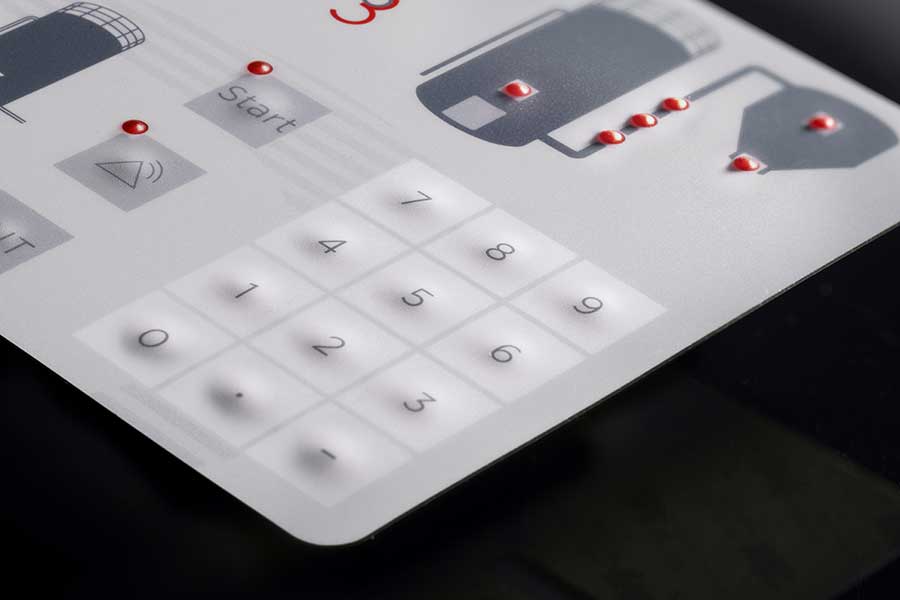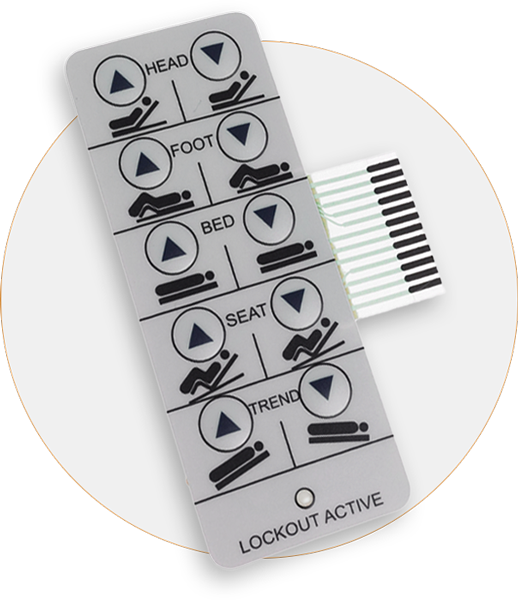Discover Just How Membrane Switches Feature and Their Role in Modern Electronics
Membrane Switches represent an advanced combination of modern technology and style within the world of modern electronic devices, serving as crucial interfaces in countless devices. Understanding the ins and outs of Membrane switch performance and their broader effects in enhancing individual experience welcomes further expedition into their style, benefits, and the cutting-edge advancements shaping their future in modern technology.
What Are Membrane Switches?

Membrane buttons are identified by their resilience and resistance to environmental aspects, such as dirt, moisture, and extreme temperatures. They can be customized with various graphics, colors, and responsive responses alternatives, boosting customer experience while maintaining aesthetic charm - membrane switches. Moreover, the consolidation of published circuits permits for seamless integration right into tools, improving general performance.
The adaptability of Membrane buttons appears in their capacity to support both complicated and easy control features. They can integrate functions such as LED indicators and touch-sensitive innovation, accommodating certain individual requirements. As technology remains to evolve, Membrane Switches continue to be necessary for making it possible for user-friendly and effective interface, thereby playing a pivotal function in the development of modern electronic tools.
Parts of Membrane Buttons
Membrane switches are made up of several vital elements that collaborate to develop a practical and dependable user interface. The main components include the graphic overlay, adhesive layer, spacer layer, and conductive traces.
The graphic overlay works as the customer interface, normally published on a versatile substrate such as polyester or polycarbonate. This layer not only provides aesthetic charm but additionally includes tactile comments, aesthetic signs, and safety features. Below the visuals overlay lies the glue layer, which safeguards the button to the gadget and makes certain toughness against environmental tensions.
The spacer layer is important for maintaining the necessary void in between the visuals overlay and the circuit layer. This void permits the activation of the button when pressure is applied. The conductive traces, normally made from silver or carbon, form the electrical pathways that complete the circuit when the switch is engaged.
Furthermore, a support layer may be consisted of for structural support and insulation. These components team up seamlessly, guaranteeing that Membrane buttons are both user-friendly and resistant, making them essential in various modern digital applications.
Just How Membrane Switches Work
Just how do Membrane Switches function successfully within electronic gadgets? Membrane Switches operate on the principles of pressure-sensitive innovation, utilizing a split construction that consists of visuals overlays, glue layers, and conductive components.
The style of Membrane buttons is essential for their effective procedure (membrane switches). The layers are carefully crafted to offer tactile responses, toughness, and resistance to environmental variables such as dampness and dirt. The inclusion of domes-- tiny, increased locations within the switch-- enhances responsive response, giving users with a visible click sensation upon activation
In addition, Membrane buttons can be personalized in regards to size, form, and graphics, making them suitable for numerous applications. They are often utilized in control panels, medical devices, and customer electronics due to their smooth design and dependability. In general, the effective functioning of Membrane switches is essential in enhancing customer communication and guaranteeing smooth procedure in modern digital gadgets.

Applications in Modern Instruments
Utilizing their distinct layout and functionality, Membrane switches have actually come to be essential parts in a wide range of contemporary electronic devices. These functional user interfaces are used in customer electronics, click for info commercial tools, medical gadgets, and automotive controls, offering seamless individual interaction.
In consumer electronics, Membrane buttons are commonly found in devices like microwaves, washing machines, and other household devices, where they allow instinctive control with a streamlined account. Their inconspicuous style promotes combination into compact devices, enhancing aesthetic allure without endangering functionality.
In industrial applications, Membrane Switches work as control board for machinery, providing sturdiness and resistance to extreme settings. Their capability to endure moisture and impurities makes them excellent for use in manufacturing and handling markets.
Medical tools also gain from Membrane switches, which are designed to be simple to tidy and keep, anonymous making certain hygiene in professional settings. They are often made use of in diagnostic tools, individual tracking systems, and portable clinical gadgets, where reliability is paramount.
Advantages of Membrane Buttons
One of the vital benefits of Membrane switches is their versatility, which enables them to be tailored for a range of applications throughout numerous industries. These buttons can be designed in numerous forms and sizes, suiting unique item requirements while giving smooth assimilation right into tools. Their slim profile enables a sleek and portable design, typically improving the visual appeal of electronic items.
Another significant advantage is their longevity - membrane switches. Membrane our website switches are commonly resistant to dirt, moisture, and chemicals, making them optimal for harsh settings. This durability prolongs their life-span compared to standard mechanical buttons, reducing the demand for frequent replacements
Furthermore, Membrane Switches deal cost-effectiveness. The manufacturing process includes printing innovations that reduce manufacturing prices, specifically for large runs. This affordability, combined with low maintenance demands, makes them an eye-catching alternative for producers.

Conclusion
To conclude, Membrane Switches stand for a significant development in interface technology within modern electronic devices. Their layered building, pressure-sensitive operation, and versatility to different applications highlight their value throughout multiple industries. The resilience and environmental resistance of Membrane Switches further improve their appeal, making them a preferred choice for makers seeking customizable and dependable remedies. As the need for durable and user-friendly interfaces remains to expand, the function of Membrane buttons fit individual experience will certainly expand.
Membrane Switches stand for an advanced integration of modern technology and design within the world of contemporary electronic devices, offering as essential user interfaces in various tools.In the realm of modern-day electronic devices, Membrane Switches serve as important components that facilitate customer interaction with tools. As technology proceeds to evolve, Membrane Switches stay important for enabling intuitive and reliable individual interfaces, therefore playing a critical duty in the development of modern-day digital devices.
Just how do Membrane Switches function properly within digital devices? On the whole, the reliable performance of Membrane buttons is critical in improving user interaction and making certain seamless operation in contemporary digital gadgets.